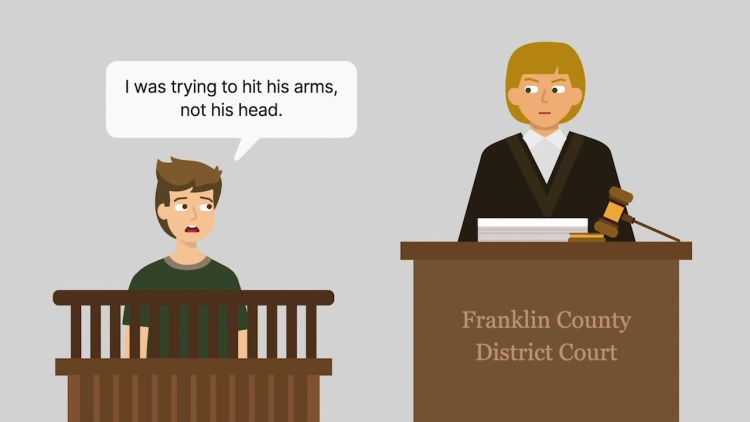State v. Robinson
Kansas Supreme Court
261 Kan. 865, 934 P.2d 38 (1997)
- Written by Jamie Milne, JD
Facts
Clyde Crowley claimed his sons were being threatened by a group of boys led by Jeremy Hendrickson. Crowley believed the police were not adequately responding to the threats and chose to confront Hendrickson and his followers, including Jerry Lee Robinson (defendant), at a local park. Crowley told the boys to leave his sons alone. An altercation ensued, and one of the boys threatened Crowley with a knife. Crowley retrieved a baseball bat and started chasing the boys. The boys armed themselves with golf clubs, and Crowley and the boys started fencing with the bat and clubs. One of the boys hit Crowley in the back with a golf club, and Crowley chased him. After the boy fell to the ground, Crowley hit the boy twice with the bat. Hendrickson then hit Crowley twice in the back and ribs with a golf club. As the boy on the ground began to get up, Robinson struck Crowley in the head with a golf club. The club became lodged in Crowley’s head, and the boys fled the scene. Crowley died from the strike to his head. Robinson, who was 14 years old, returned to the crime scene and told officers his version of events. Robinson was convicted of depraved heart second-degree murder under Kansas Statutes Annotated § 21-3402(b). At trial, the jury was instructed on depraved-heart murder and the lesser-included offense of involuntary manslaughter. The court of appeals affirmed Robinson’s conviction. Robinson appealed to the Supreme Court of Kansas, arguing that depraved-heart murder and involuntary manslaughter are essentially the same offense with two different penalty levels, resulting in arbitrary distinctions in enforcement.
Rule of Law
Issue
Holding and Reasoning (Abbott, J.)
Concurrence/Dissent (Lockett, J.)
What to do next…
Here's why 899,000 law students have relied on our case briefs:
- Written by law professors and practitioners, not other law students. 47,000 briefs, keyed to 994 casebooks. Top-notch customer support.
- The right amount of information, includes the facts, issues, rule of law, holding and reasoning, and any concurrences and dissents.
- Access in your classes, works on your mobile and tablet. Massive library of related video lessons and high quality multiple-choice questions.
- Easy to use, uniform format for every case brief. Written in plain English, not in legalese. Our briefs summarize and simplify; they don’t just repeat the court’s language.





